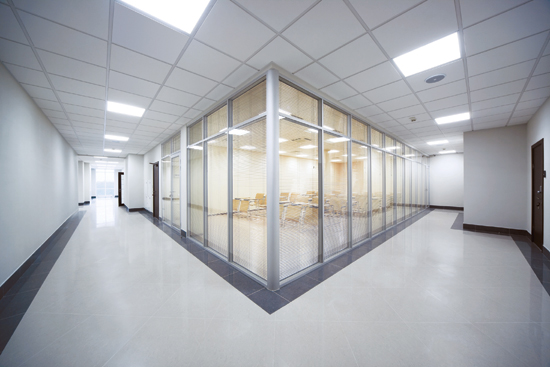LED Lighting for Commercial Ceilings
Learning Objectives:
- Identify and recognize the characteristics associated with high-performance lighting particularly LED lighting fixtures for commercial spaces.
- Investigate the conditions that contribute or detract from lighting quality.
- Assess the functional attributes of LED lighting fixtures and their suitability for use in commercial applications.
- Specify LED light fixtures that are energy efficient and provide the quality of light required for particular design intents.
Credits:
Providing commercial buildings with good-quality interior lighting has become as much a science as an art. The need for greater energy efficiency mandated by codes, standards, and professional best practices has spurred improvements to existing lighting technologies and given rise to entirely new ones. Fluorescent light fixtures, for example, have been a long-standing staple for commercial lighting and have undergone many improvements in their lamps, ballasts, and fixture design, resulting in more light output from less energy. Meanwhile, new technologies using electronic light-emitting diodes (LEDs) have emerged, been developed, and brought to market in a variety of ways. Among the newest available technologies are luminous LED panels that provide even greater efficiency along with other attributes that make them worthy for consideration in all commercial building designs. These LED panel fixtures can meet and/or exceed energy conservation requirements while also addressing the quality of the luminous environment appropriate to the design intent of the building.
Lighting Performance Overview
In order to put the energy and light-emitting performance of these different lighting technologies into perspective, let's start with a review of some fundamental lighting principles. Since we are talking about electrical energy that powers all of these lights, the energy that is consumed is measured in watts, or more commonly kilowatts (1,000 watts). The electrical utility company charges not just for the wattage but also for the time that energy is being consumed and hence the common billing unit of kilowatt-hours (kWh). Based on this, it should be clear that electrical energy consumed for lighting is a function of both the amount of watts that each light fixture requires to operate and the time that the lights are on. In other words, the total kWh needed for lighting a commercial building on any given day is equal to the electrical power (kilowatts) consumed by the light fixtures multiplied by the time (hours) those fixtures are turned on.
 |
LED panel lighting takes advantage of the latest energy-efficient technology while producing very high-quality light for commercial spaces. Photo courtesy of RAB Lighting, Inc. |










